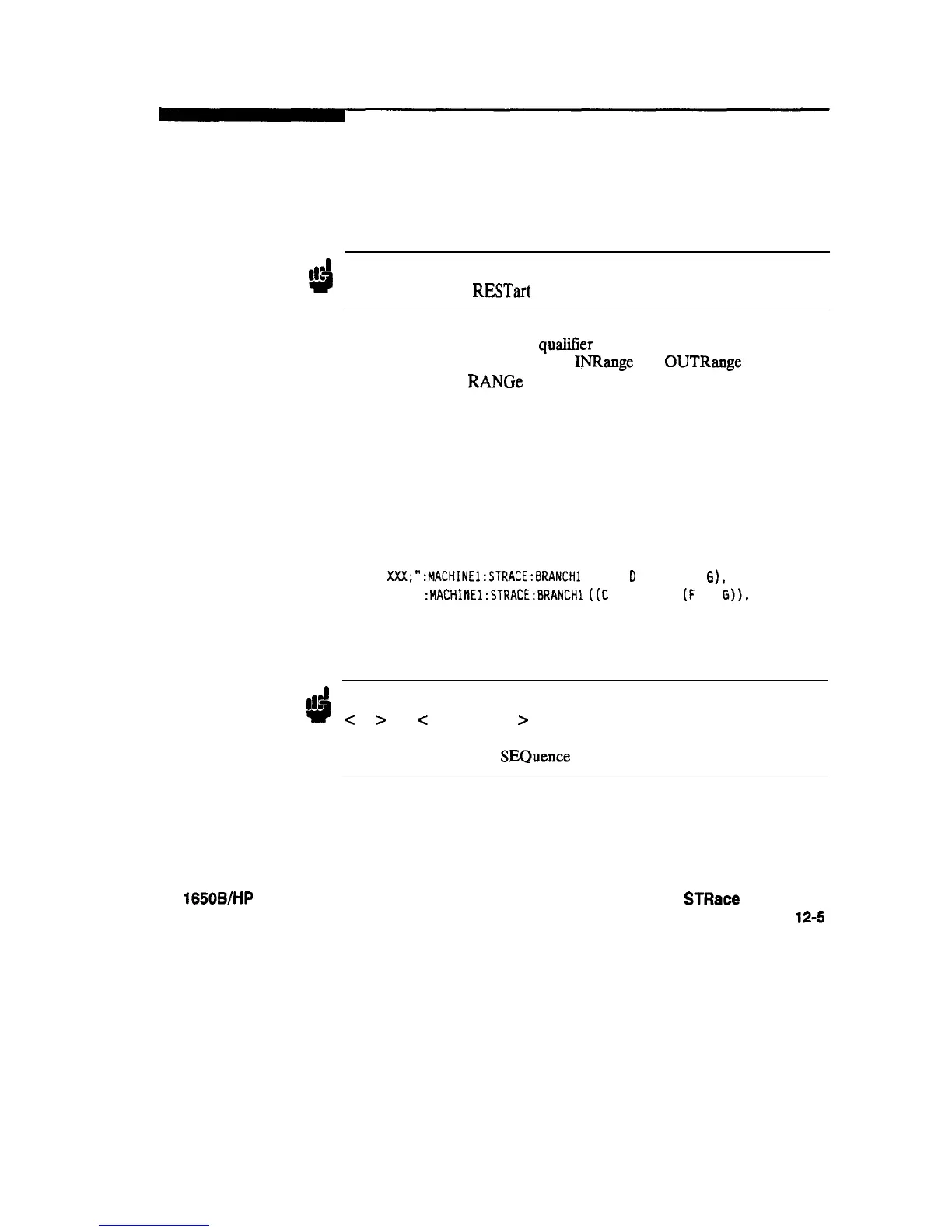BRANch
BRANch
Note
d
command/query
The BRANch command defines the branch qualifier for a given sequence
level. When this branch qualifier is matched, it will cause the sequencer
to jump to the specified sequence level.
“RESTART PERLEVEL” must have been invoked for this command to
have an effect (see
RESTart
command).
Note
d
The terms used by the branch
qualifier
(A through H) are defined by the
TERM command. The meaning of
INRange
and
OUTRange
is
determined by the
RANGe
command.
Within the limitations shown by the syntax definitions, complex
expressions may be formed using the AND and OR operators.
Expressions are limited to what you could manually enter through the
front panel. Regarding parentheses, the syntax definitions on the next
page show only the required ones. Additional parentheses are allowed as
long as the meaning of the expression is not changed. For example, the
following two statements are both correct and have the same meaning.
Notice that the conventional rules for precedence are not followed.
OUTPUT XXX;":MACHINEl:STRACE:BRANCHl (C OR
0
AND F OR 6). 1"
OUTPUT XXX;" :MACHINEl:STRACE:BRANCHl
((C
OR D) AND
(F
OR
G)).
1"
Figure 12-2 (on page 12-7) shows a complex expression as seen on the
Format display.
Branching across the trigger level is not allowed. Therefore, the values for
<
N
>
and
-z
to-level-num
>
must both be either on or before the trigger
level, or they must both be after the trigger level. The trigger level is
determined through the
SEQuence
command.
The BRANch query returns the current branch qualifier specification for
a given sequence level.
HP 1650WHP 16516
Programming Reference
STRace Subsystem
12-5

